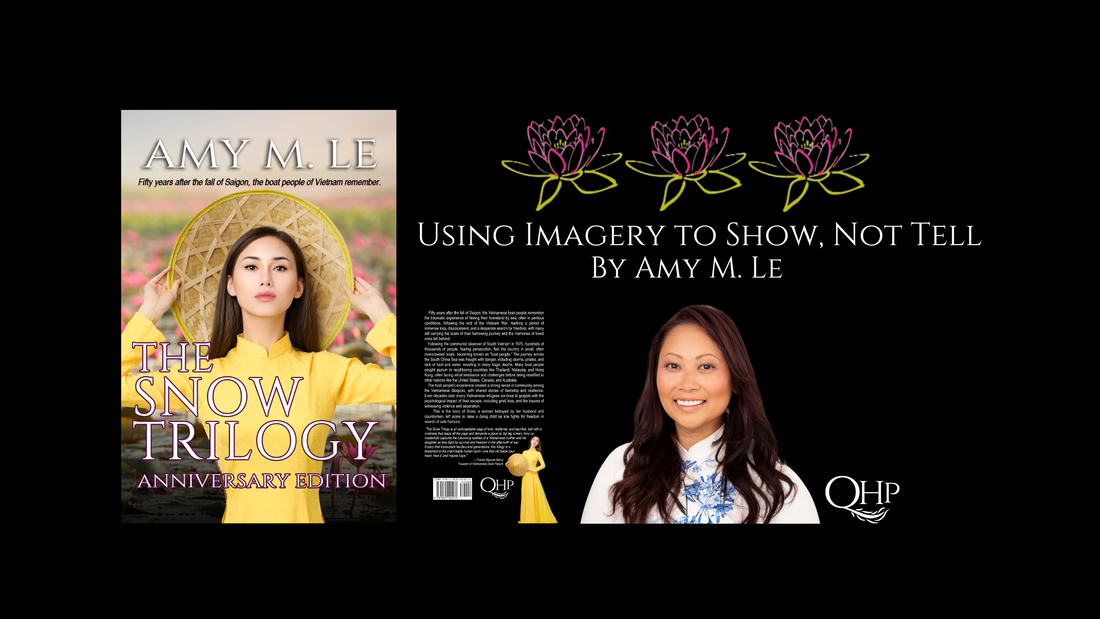How often do writers hear from editors and critique team members to "show, don't tell?" What does that even mean?
"Show, Don't Tell" is a fundamental principle in storytelling that encourages authors to convey emotions, experiences, and settings through vivid imagery and actions rather than explicit statements. By showing and not telling, writers can engage readers more deeply and allow them to experience the story rather than just read about it.
This approach enhances immersion into the story. By showing actions, emotions, and sensory details, writers create a vivid picture that pulls readers into the moment. Readers can empathize and feel more connected to the story by witnessing the characters' experiences and emotions through actions and dialogue.
Showing requires readers to infer and interpret, making them active participants in the narrative. This involvement can enhance their enjoyment and investment in the story. The nuances of showing allow for subtext to unfold. Readers can pick up on themes and meanings that might be more heavy-handed if told.
Showing behaviors and reactions helps to naturally reveal a character's personality and motivations, creating more dynamic and believable characters.
Using "show, don’t tell" effectively can lead to more compelling writing that resonates with readers.
When writing a scene, think about the sensory details. Engage the senses by describing sights, sounds, smells, tastes, and textures. For example, instead of saying, "The room was messy," describe the clothes strewn across the floor and the dust motes floating in the sunlight.
One exercise I often do when I travel is analyzing objects and writing down on a notepad or my phone what the object, such as a door, smells and feels like. Is the paint cracked and chipped? Is the door uneven? Is the texture smooth or rough? Does it smell like a musty attic or fresh paint? What emotions does it evoke, and does it transport me to another place or memory?
Another way to show and not tell is to incorporate dialogue, which allows characters to express their emotions and personalities through conversation. This can reveal their feelings and motivations without the narrator directly stating them. It also gives the reader a sense of their accent, cultural background, the region they grew up in, and education level, all without telling it. Dialogue can distinguish one character from another so they all do not sound alike. Perhaps one character has a quirk or particular slang word they use, or they have a unique accent and pronounce a word differently. Some characters swear, while others are more polite. It can be fun and challenging to develop ways a character speaks in dialogue to show readers where they're from, their emotional well-being, and their personalities.
An internal monologue is also an option alongside dialogue to show vs. tell. Sharing a character's thoughts and feelings through internal dialogue allows readers to infer their emotions based on their reflections and reasoning.
Showing emotions through actions is a great exercise as well. Rather than telling what a character feels (e.g., "She was angry"), describe their physical reactions (e.g., "Her fists clenched, and her voice rose as she spoke").
Using metaphors and similes might be one of the easiest ways to show versus tell. Creative comparisons can convey complex ideas and emotions. For instance, “His heart raced like a drum beating in a quiet room” can evoke the urgency of a moment. On a side note, short sentences can convey urgency or a fast pace, while longer sentences can evoke leisure or a lackadaisical sentiment.
Create dynamic scenes. Instead of summarizing events, immerse readers in the moment. Describe the actions and reactions of characters during a pivotal scene to create tension and engagement. Perhaps that crucial scene is a family reunion or the birth of a child. Use that opportunity to show, not tell, to draw the reader in and celebrate or feel anxiety alongside the character.
Remember that body language is a non-verbal cue that can show a lot of what the character is feeling. They can communicate feelings and thoughts without explicit explanation through facial expressions, posture, and gestures.
Don't forget the setting as a reflection by using the surroundings to mirror the characters’ internal states. A stormy night can reflect turmoil, while a sunny day can signify joy or hope.
Small details matter. Take the time to notice these details and savor the moments rather than rush through the scene. Highlight specific, relatable details that imply broader themes or emotions, enriching the reader's understanding. Perhaps a daughter notices a scratch on her father's nose, and it clues her into what he's been up to or reminds her of a childhood memory.
Finally, let readers experience the journey. Allow the audience to draw conclusions based on the evidence you present, trusting them to interpret the emotions and themes for themselves. Readers are astute and read your work to be entertained, escape from day-to-day routine, and learn something new. A good book not only entertains and educates but sucks the reader into someone else's shoes and allows them to safely experience what it's like to be a nine-year-old boy with a heart condition or a seventy-year-old man who fought a war or a gay young man coming out to his friends and family for the first time.
By incorporating these techniques, authors can create a more immersive and emotionally resonant experience for readers. So remember, show, don't tell.
About Amy M. Le
Amy M. Le is a Vietnam War survivor and Congenital Heart Defect (CHD) warrior. She founded Quill Hawk Publishing, a woman-owned, Asian American hybrid publishing company that helps writers indie publish their books while amplifying diverse voices one story at a time. Amy grew up in Seattle, WA, and had a successful career at Microsoft and T-Mobile before becoming a writer, publisher, and speaker. She is the critically acclaimed author of The Snow Trilogy: Anniversary Edition, an epic auto-fiction saga based on the Vietnamese boat people and diaspora. Amy co-founded The Heart Community Collection, a resource for the CHD community. She was profiled as one of sixteen Asian Women Trailblazers Who Boss Up by Women with Vision International and was named Top Fifty Unsung Heroes of 2023 by the Asian Hustle Network. Amy is a Seattlelite currently residing in Oklahoma.







